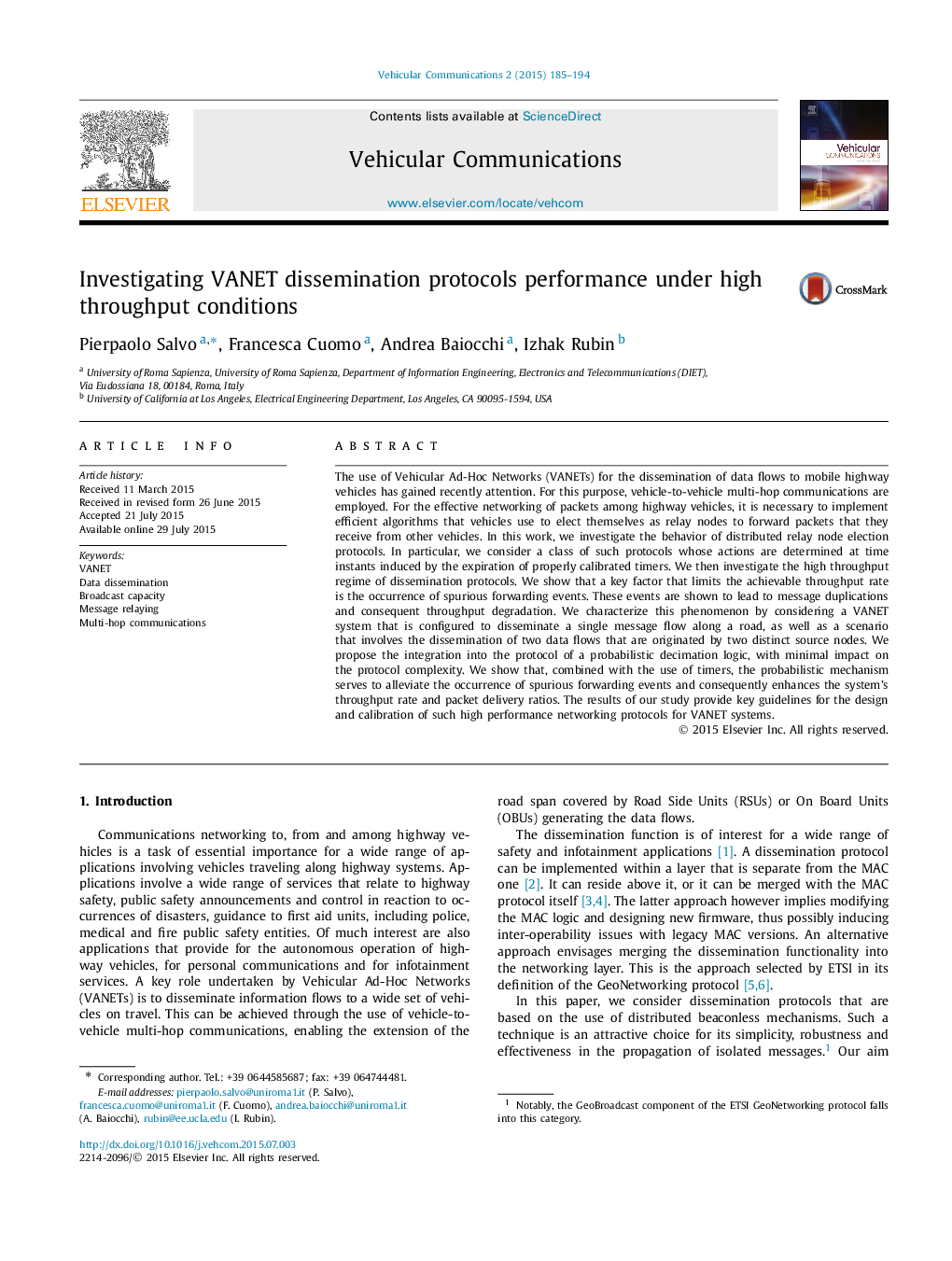| Article ID | Journal | Published Year | Pages | File Type |
|---|---|---|---|---|
| 466887 | Vehicular Communications | 2015 | 10 Pages |
The use of Vehicular Ad-Hoc Networks (VANETs) for the dissemination of data flows to mobile highway vehicles has gained recently attention. For this purpose, vehicle-to-vehicle multi-hop communications are employed. For the effective networking of packets among highway vehicles, it is necessary to implement efficient algorithms that vehicles use to elect themselves as relay nodes to forward packets that they receive from other vehicles. In this work, we investigate the behavior of distributed relay node election protocols. In particular, we consider a class of such protocols whose actions are determined at time instants induced by the expiration of properly calibrated timers. We then investigate the high throughput regime of dissemination protocols. We show that a key factor that limits the achievable throughput rate is the occurrence of spurious forwarding events. These events are shown to lead to message duplications and consequent throughput degradation. We characterize this phenomenon by considering a VANET system that is configured to disseminate a single message flow along a road, as well as a scenario that involves the dissemination of two data flows that are originated by two distinct source nodes. We propose the integration into the protocol of a probabilistic decimation logic, with minimal impact on the protocol complexity. We show that, combined with the use of timers, the probabilistic mechanism serves to alleviate the occurrence of spurious forwarding events and consequently enhances the system's throughput rate and packet delivery ratios. The results of our study provide key guidelines for the design and calibration of such high performance networking protocols for VANET systems.
